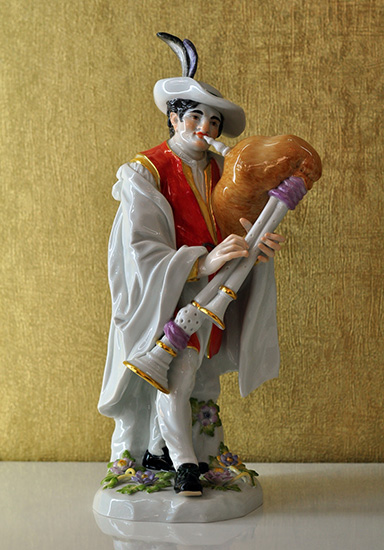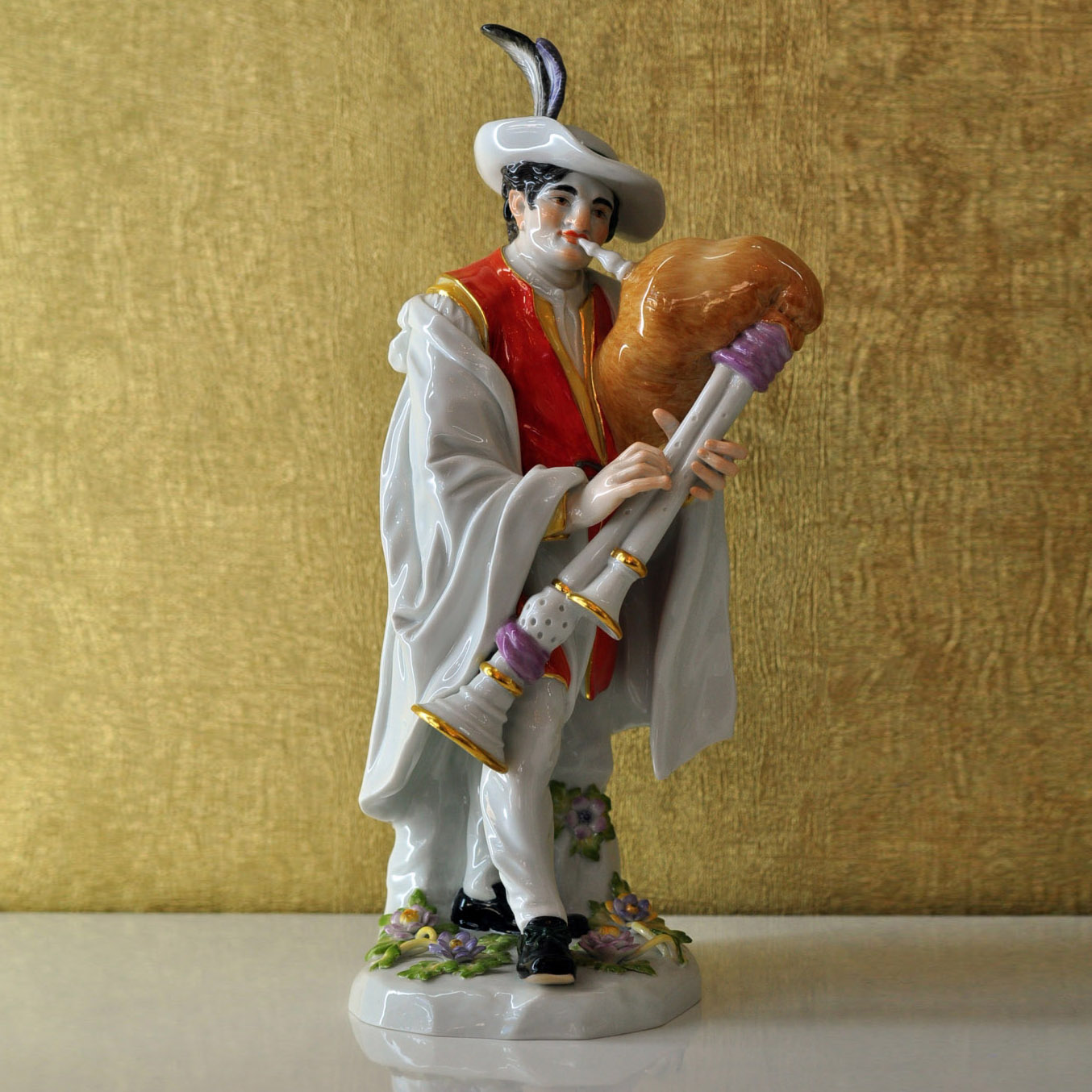Bagpiper
Sculptors: Peter Reinicke and Johann Joachim Kaendler
Year of creation: 1750s
Height: 26 cm
The history of bagpipe goes back some 3,000 years and the instrument is known to almost all the nations of the world. In the Middle Ages it became very popular in Europe and until now the bagpipe is considered a national instrument in several countries.

The bagpipe is an ancient wind instrument, which is a bag made of thin, soft skin, which on the one hand is fixed to tube with holes to play melodies, and on the other to a short tube for blowing air. Historical evidence stipulates that bagpipes were used in Rome as early as the first century AD, because the infamous Emperor Nero allegedly played this instrument. As the bagpipe was brought to the British Isles by the Romans, Scotland is mistakenly called the birthplace of bagpipes.
There are many types and kinds of bagpipes. Hallmark of any classical bagpipe is a long, continuous, zing. Earthly music bagpipe entered the life of the peasants, shepherds, and later soldiers and kings.
This porcelain sculpture of the German Meissen porcelain factory depicts a Georgian shepherd with a bagpipe. Pay attention to the incredibly long fingers shepherd, the fur clothing, and the headdress with feathers of a true mountaineer. The lonely shepherd with musical instrument in the hands always personified lyrical poetry, so it is not accidental that pastoral topics are given attention by professionals in the art of Meissen. The image of the shepherd was very popular in the Rococo era and often became the main theme in many forms of art.
Acquire this figure from our art salon and give this bagpiper a place in your home and you maybe in the silence of the night you will hear the unusual sounds of this ancient and amazing instrument. Add some music and lyrics to your collection of porcelain.

You can order this figurine our webstore:


